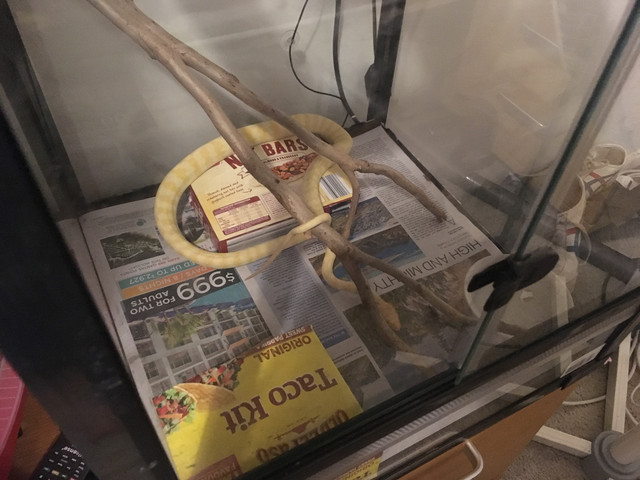@Bl69aze. The advice
@Shire pythons provided is spot on. Darwins come from a warmer provenance that most carpets and therefore require a slightly higher temperature. A basking spot of 36 degrees and a hot end air temp of 30 – 32 degrees is appropriate. Heating is not required at night unless cage temps consistently drop below 20 degrees in summer or 15 degrees in winter. If night heating is required, then use a low wattage heat mat or heat cord to raise the air temperature to around 20 degrees.
Pythons are primarily nocturnal. They warm themselves during the day, many by basking in sunshine. This is to raise their body temperature to allow normal physiological functioning. They then behave to conserve the heat absorbed so they can be active at night. They do this by coiling up to reduce their outer surface area, which gives off heat to their surroundings. Any air around them will be heat up from their warmer bodies. If this air can move freely it will take that heat away with it. Same principal as the wind chill factor. By trapping the warmed air, they can better conserve heat. So they seek tight retreats where they can do this, be that hollows in trees or terrestrial retreats. Hides provided by keepers should reflect this.
In the wild, carpets mate in late autumn and winter (May to August). This is also their period of brumation, so how is this possible? On sunny winter days pythons bask to raise their body temperature. Some will then mate during the day. Others retire and conserve body heat, to emerge at night to hopefully mate before they get too cold.
Pythons do not eat during this period as they cannot be assured of sufficient on-going body temperature to digest a meal before it rots in their gut. So all feeding should cease at least
two weeks before beginning cooling.
Shire pythons’ posts translated the above into practical captive management. Following is a simple way to put into practice his cooling suggestions:
· Use
one hour changes, between;
·
Decrease March ® June;
·
Increase September ® November.
I’ll leave it there for now, but there are a few more points to be made on if time permits. In the meantime I hope the background explanation to captive management practices provided helps to clarify what has to be done, how and why.





